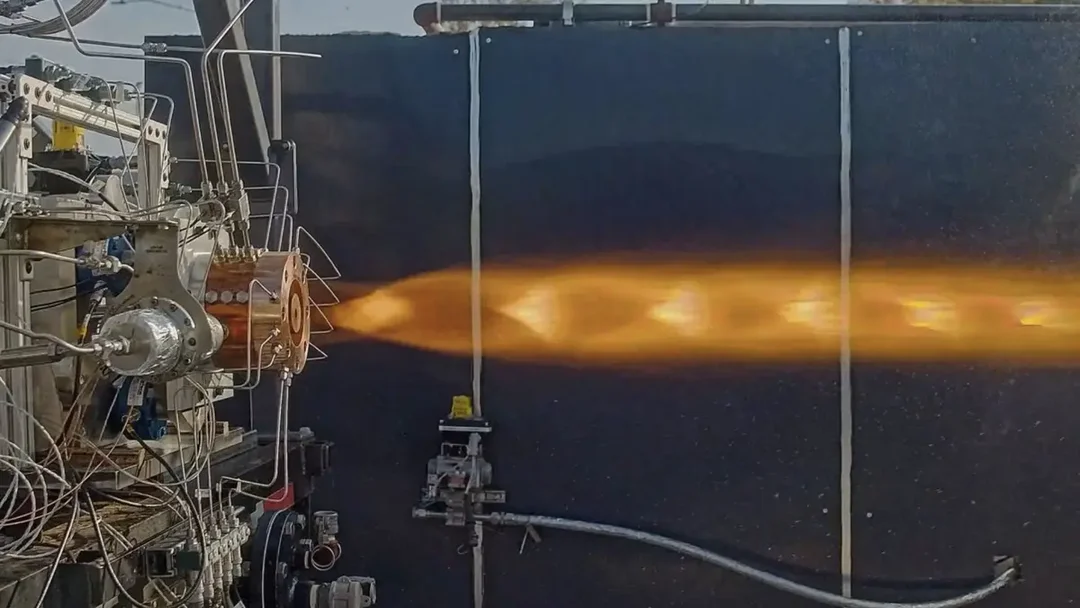
Venus Aerospace’s Hypersonic Engine Test: A Leap Towards Mach 4 Passenger Flights and Closing the Missile Gap with China
The race for hypersonic technology is heating up, and Venus Aerospace, a startup based in Houston, Texas, just took a significant leap. The company successfully tested its Rotating Detonation Rocket Engine (RDRE) at Spaceport America in New Mexico, marking a potential revolution in high-speed flight and a step towards closing the U.S. hypersonic missile gap with China. But what makes this test so important?
The RDRE is touted as a significant improvement over traditional rocket engines. According to a 2023 paper published in Scientific Reports, detonation-based combustion, like that in RDREs, can produce up to a 10% increase in thrust compared to constant pressure engines. This also promises smaller, lighter thrusters and reduced sensitivity to engine-damaging acoustic instabilities. Ultimately, Venus Aerospace envisions using this groundbreaking engine to power the Stargazer M4, a Mach 4 reusable passenger aircraft.
"This is the moment we've been working toward for five years," said Sassie Duggleby, CEO and Co-founder of Venus Aerospace. "We've proven that this technology works—not just in simulations or the lab, but in the air. With this milestone, we're one step closer to making high-speed flight accessible, affordable, and sustainable."
The test involved launching the RDRE and validating its performance and system integrity under real flight conditions. As Andrew Duggleby, Co-founder and Chief Technology Officer, explained, the RDRE solves critical steps in harnessing the theoretical benefits of pressure gain combustion. "We've built an engine that not only runs, but runs reliably and efficiently—and that's what makes it scalable. This is the foundation we need that, combined with a ramjet, completes the system from take-off to sustained hypersonic flight."
This achievement is not just about commercial flight; it also carries significant implications for national security. As reported by the Washington Post and other sources, the U.S. military has been warned about falling behind China and Russia in the development of hypersonic weapons. The Pentagon has stated that China has world’s leading hypersonic missile arsenal.
Startups like Venus Aerospace and Ursa Major are pushing the boundaries of aerospace engineering, fueled by increasing interest from Silicon Valley and advancements in manufacturing. Breakthroughs in additive manufacturing (3D printing with high-performance metals) have made it cheaper and easier to produce and test complex rocket engines.
According to Andrew Duggleby, the efficient engine that Venus is working on will allow for hypersonic weapons that are 10 times cheaper than those currently available. Reducing the cost of such weaponry is crucial for military strategists.
Scott McLaughlin, Executive Director at Spaceport America, highlighted the significance of this achievement. "Getting a rotating detonation rocket engine to the launch pad is an achievement few thought possible in such a short time. We're thrilled to host innovators like Venus, whose breakthroughs are redefining what's possible in spaceflight."
The successful test positions Venus Aerospace as a leader in the hypersonic systems market, which is projected to exceed $12 billion by 2030. With plans for full-scale propulsion testing and vehicle integration, Venus is actively working to make hypersonic flight a reality.
This test signals a pivotal moment for both commercial and military applications of hypersonic technology. Will Venus Aerospace's success truly revolutionize air travel and re-establish U.S. dominance in high-speed weaponry? What other innovations will emerge from the growing competition in this sector?
Share your thoughts and predictions in the comments below!